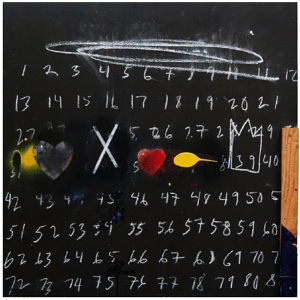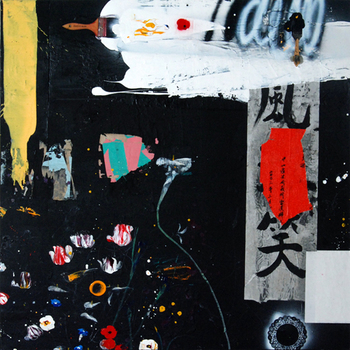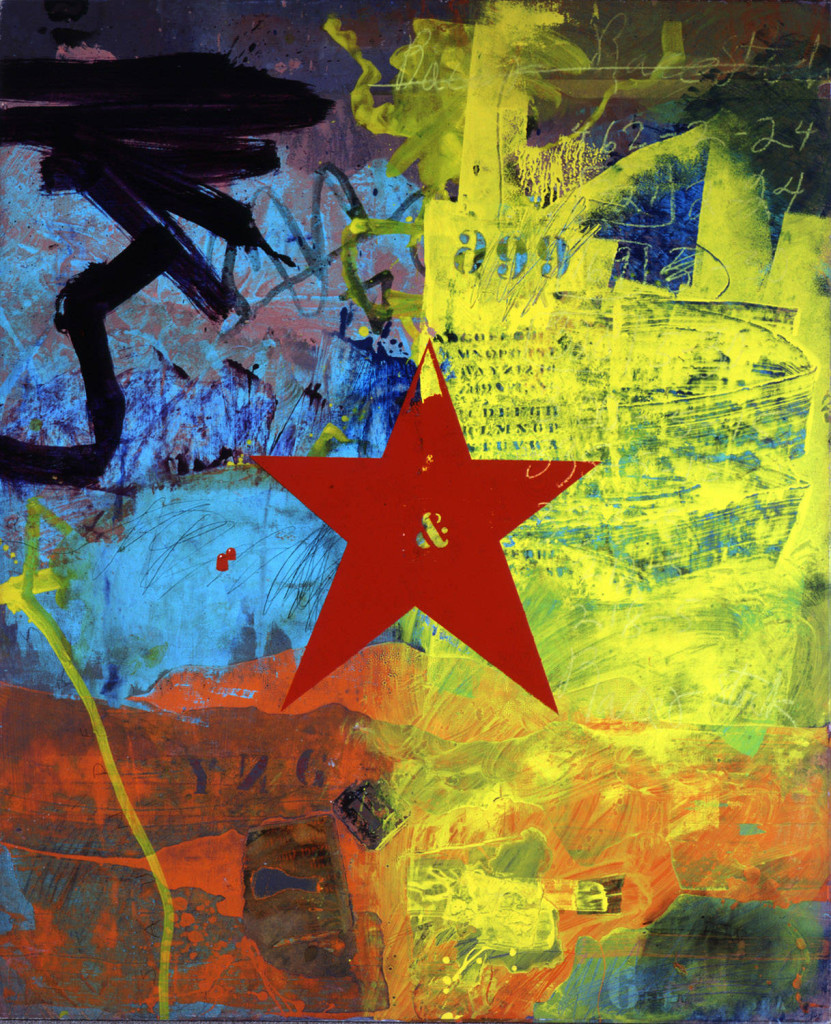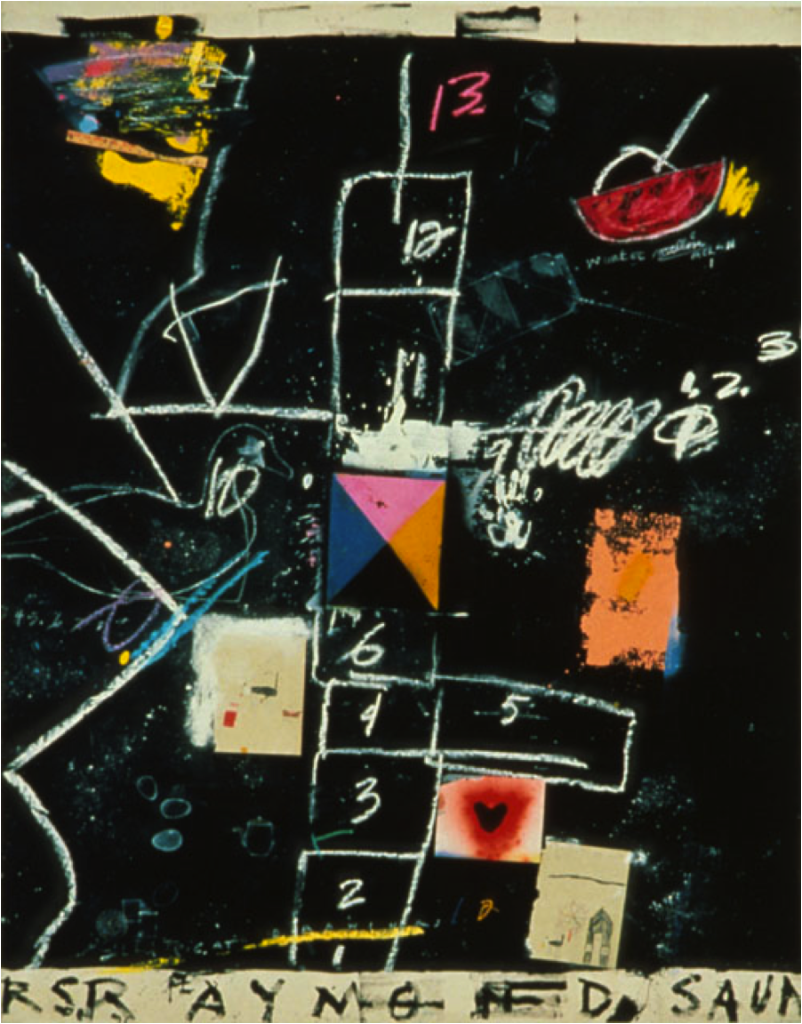
Raymond Saunders, Pittsburgh 1934.
About:
Raymond Saunders works in a variety of media, but is primarily known for his painting, which incorporates collage, assemblage, and drawing, occasionally crossing over into sculpture and installation. Often praised for his sensitive and skillful drawing, the unexpected way he juxtaposes media, and a deceptive sense of ease to his mark-making, which calls to mind improvisational jazz, Saunders defies categorization — eschewing easy labels and insisting that the art speak for itself.
Born in 1934 in Pittsburgh, Saunders has exhibited nationally and internationally since 1952, including exhibits in France, Germany, Switzerland, Denmark, Singapore, Korea, Japan, China, and a 1965 exhibit at the American Academy in Rome. He participated in the 1972 Whitney Biennial and multiple solo museum exhibits including at the M.H. De Young Memorial Museum, the San Francisco Museum of Modern Art, the Oakland Museum of California, and the Pennsylvania Academy of Fine Arts. In 2011, Saunders joined numerous notable artists in the Los Angeles Hammer Museum’s, Now Dig This! Art & Black Los Angeles 1966-1980.
Garden, 2003.
In 1992 Saunders curated Paris Connections at Bomani Gallery in San Francisco — whose catalog received an American Book Award. In 1994 he organized a groundbreaking conference at the Palais du Luxembourg in Paris to explore the diverse experiences of African American expatriates in France: A Visual Arts Encounter: African Americans & Europe.
Red Star, 1970.
Multiple publications feature Saunders’s work, including Richard Powell’s Black Art and Culture in the 20th Century, and H. W. Janson’s History of Art, and his work has been reviewed in Art Forum, Art in America, the San Francisco Chronicle, the Los Angeles Times, and the New York Times.In 1976 Saunders contributed to America: The Third Century, a limited-edition portfolio of prints commemorating the bicentennial of the United States, along with Robert Rauschenberg, James Rosenquist, Roy Lichtenstein, Edward Ruscha, and Christo. In 1983 he designed an official limited-edition poster for 1984 Summer Olympic Games in Los Angeles. In 1984 he designed the book cover and poster for David Mamet’s Pulitzer Prize and Tony Award-winning play, Glenngary, Glenn Ross, and in 2004 he was guest artist for Francis Ford Coppola’s Zoetrope All Story, Vol. 8 No. 2.
Beauty as Empathy, 2009.
Saunders has also published catalogs and pamphlets; most notably, his 1967 pamphlet “Black is a Color”, which argues that African American artists need not be limited by racial representations, and argues against the concept of “black” art as a potentially degrading restriction, in favor of a more race-neutral approach to artistic creation.
Saunders’s work can be found in the permanent collections of the Museum of Modern Art in New York, the Whitney Museum of American Art, the Metropolitan Museum of Art, the American Academy and Institute of Arts and Letters, the Corcoran Gallery of Art, the Carnegie Institute Museum of Art, the Museum of Contemporary Art in Los Angeles, the San Francisco Museum of Modern Art, and many other public and private collections.
Celeste-age 5-invited me to tea, 1986.
His awards include the National Institute of Arts and Letters Award (1963), the Ford Foundation Award (1964), a Prix de Rome Fellowship in Painting (1964-66), a Guggenheim Fellowship (1976), and two National Endowment for the Arts awards (1977 and 1984).
Raymond Saunders studied at the University of Pennsylvania, the Pennsylvania Academy of Fine Arts, the Barnes Foundation, the Carnegie Institute of Technology, and California College of the Arts (CCA). He is Professor Emeritus at Cal State East Bay in Hayward and President’s Fellow at CCA. (source: California College of the Arts)
Professor Emeritus, Painting Drawing




